In the bustling world of commercial kitchens, the panini press has emerged as a staple for quick and delicious sandwiches. This versatile appliance has not only revolutionized the way we enjoy our meals but has also become a cornerstone for businesses looking to offer a unique dining experience. As we delve into the intricacies of the commercial panini press market, it’s clear that innovation, consumer preferences, and the competitive landscape play pivotal roles in shaping the future of this industry.
The Rise of Panini Presses in the Commercial Kitchen Scene
The commercial kitchen scene has undergone a remarkable transformation, and one of the standout trends has been the rise of panini presses. These versatile appliances have become a staple in fast-casual and casual dining establishments, offering a quick and delicious solution for a variety of grilled sandwiches. Let’s delve into the factors that have contributed to this surge in popularity.
Gone are the days when grilling was a time-consuming process limited to gourmet restaurants. With the advent of commercial panini presses, the ability to create mouth-watering paninis has been democratized, allowing even small-scale foodservice operators to offer this beloved menu item. The convenience and efficiency of these machines have made them a must-have in the commercial kitchen.
One of the key drivers behind the rise of panini presses is the increasing demand for fast and flavorful food options. Consumers today are looking for quick service without compromising on taste, and panini presses fit this bill perfectly. These presses can cook a panini in just a few minutes, ensuring that customers receive their meal hot and freshly prepared, right when they order.
Another factor that has propelled the growth of commercial panini presses is the versatility they offer. These machines can handle a wide array of breads, from traditional Italian bread to ciabatta, baguettes, and even gluten-free options. The ability to customize sandwiches with a variety of fillings, from savory meats and cheeses to sweet fruits and spreads, has made panini a favorite among food enthusiasts.
The convenience of commercial panini presses is not just limited to speed and variety; they also contribute significantly to kitchen efficiency. These presses are designed to be user-friendly, with intuitive controls that allow chefs to easily adjust temperature and pressure settings. This not only ensures consistent cooking results but also reduces the risk of undercooking or overcooking, which can be a challenge with traditional grilling methods.
Moreover, the compact size of commercial panini presses makes them a space-saving addition to any kitchen. In the fast-paced world of foodservice, where every square inch counts, these machines offer a practical solution without compromising on performance. Their ability to cook multiple sandwiches at once also helps streamline service during peak hours.
The quality of the panini presses themselves has also played a crucial role in their popularity. Manufacturers have invested in developing durable, high-quality appliances that can withstand the demands of a busy commercial kitchen. Features like non-stick surfaces, easy-to-clean designs, and sturdy construction have made these machines reliable and long-lasting.
As the demand for panini presses continues to grow, so too does the innovation in the industry. Manufacturers are now offering a range of features, from adjustable heat settings to integrated toasters and waffle irons, which allow operators to expand their menu offerings even further. This has led to a surge in the variety of products available, catering to different market needs and preferences.
Furthermore, the rise of panini presses has also been influenced by the health and wellness movement. As more consumers seek out healthier food options, the popularity of panini sandwiches, which can be made with fresh ingredients and lean proteins, has increased. This aligns with the trend towards healthier eating habits, making panini presses a perfect fit for the modern consumer.
In conclusion, the rise of panini presses in the commercial kitchen scene is a testament to the changing landscape of the foodservice industry. Their convenience, versatility, and ability to deliver high-quality, fast food have made them a staple in today’s restaurants. As manufacturers continue to innovate and meet the evolving demands of operators and consumers, it’s clear that the popularity of commercial panini presses is here to stay.
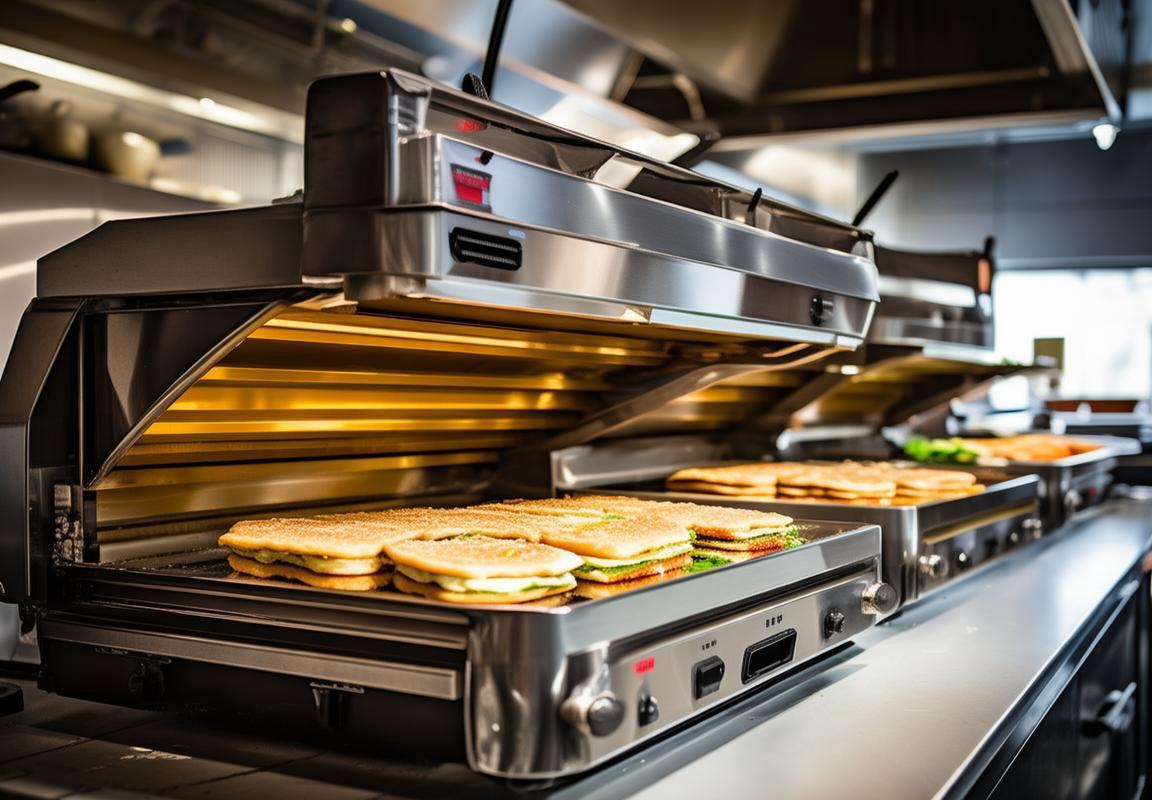
Understanding the European and American Markets: A Comparative Study
In the bustling landscape of commercial kitchen appliances, the panini press has emerged as a must-have for many establishments. This compact and versatile countertop unit has found a unique spot in both European and American markets, each with its own flavor and trends. Let’s dive into a comparative study of these distinct markets.
European Markets: A Culinary Haven for Panini Presses
-
In Europe, the panini press is not just a tool; it’s a culinary emblem, deeply rooted in the continent’s love for bread and sandwiches. The popularity of panini presses in Europe can be attributed to the region’s diverse culinary heritage, which includes countries like Italy, France, and Spain, where sandwiches are a staple.
-
Italian influences, particularly, have played a significant role in the panini press’s popularity. The “panino,” a traditional Italian sandwich, has become a global phenomenon, with panini presses making it easier for restaurants to offer this delightful treat to their customers.
-
The European market is also characterized by a preference for high-quality materials and build, with manufacturers focusing on durability and performance. The demand for commercial-grade panini presses in Europe reflects a commitment to excellence in food preparation.
American Markets: A Breadth of Variety and Innovation
-
The American market, on the other hand, has embraced the panini press as a versatile tool that can enhance the menu with a variety of grilled sandwiches, not just traditional Italian-style paninis.
-
The United States has seen a surge in gourmet and artisanal breads, which has opened up new possibilities for sandwich combinations. As a result, panini presses have become a staple in cafes, delis, and gourmet food shops across the country.
-
American consumers have a penchant for innovation, and this is reflected in the variety of panini press designs and features available. From non-stick surfaces to adjustable heat settings, the American market offers a wide range of options to cater to different preferences and cooking styles.
Differences in Usage and Consumer Behavior
-
While both markets appreciate the panini press for its ability to create delicious sandwiches, there are subtle differences in how these appliances are used. In Europe, the focus is often on authenticity and traditional flavors, whereas in the U.S., there’s a greater emphasis on innovation and variety.
-
American consumers are more likely to experiment with different toppings and ingredients, leading to a wider array of panini creations. Conversely, European users might stick to more classic combinations, ensuring a certain level of consistency in their sandwiches.
-
Additionally, the American market is more prone to adopting the latest technology, which can be seen in the introduction of digital controls and programmable settings in modern panini presses.
Regulatory and Certification Standards
-
Each market has its own set of regulations and certification standards that manufacturers must adhere to. In Europe, this often means complying with stringent safety and hygiene requirements, as well as obtaining CE marking for conformity.
-
The U.S. market also has its own standards, with the National Sanitation Foundation (NSF) playing a crucial role in certifying kitchen appliances for health and safety. Manufacturers must navigate these different frameworks to ensure their products meet the necessary criteria.
Marketing and Distribution Channels
-
Marketing strategies in both Europe and America differ in their approach. European manufacturers might focus on the culinary experience and the craftsmanship of their products, while American brands may emphasize innovation and convenience.
-
Distribution channels also vary, with European manufacturers often working closely with specialized retailers and gourmet food shops. In the U.S., a mix of retail, online sales, and direct-to-consumer marketing is common.
Conclusion
-
The European and American markets for commercial panini presses share a common love for sandwiches but diverge in their approach to the product. Understanding these differences is crucial for manufacturers looking to succeed in both regions.
-
By recognizing the unique characteristics of each market, manufacturers can tailor their products and marketing strategies to meet the specific needs and preferences of European and American consumers. This comparative study underscores the importance of cultural nuances and consumer behavior in shaping the commercial panini press industry.
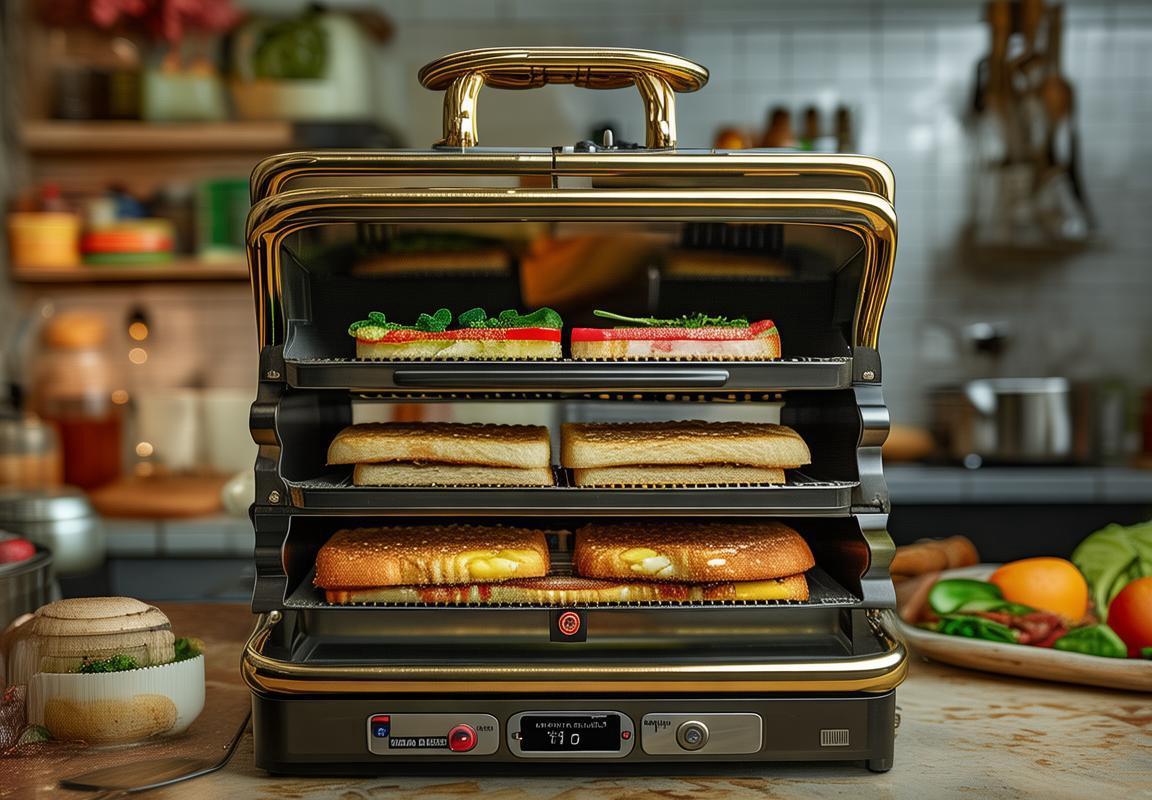
Key Features That Set Top Commercial Panini Press Manufacturers Apart
In the competitive world of commercial panini press manufacturing, several key features distinguish the top players from the rest. These features not only contribute to the quality and performance of the presses but also influence the success of the manufacturers in the market.
Efficiency and SpeedTop commercial panini press manufacturers focus on creating machines that can handle high volumes with ease. These presses are engineered to cook sandwiches quickly, often with the ability to toast and melt cheese simultaneously. The speed of these units is crucial in busy kitchens where time is of the essence.
Even Heat DistributionA hallmark of premium commercial panini presses is their ability to distribute heat evenly across the cooking surface. This ensures that each sandwich is cooked to perfection, with no cold spots or burnt edges. Advanced heating elements and non-stick surfaces are commonly used to achieve this consistent performance.
Customizable Heat SettingsProfessional kitchens require versatility, and top manufacturers cater to this need by offering panini presses with adjustable heat settings. This allows chefs to control the cooking temperature according to the type of bread and filling, ensuring that every sandwich is tailored to the guest’s preference.
Robust ConstructionThe durability of a commercial panini press is a significant factor. Top manufacturers use high-quality stainless steel for the build, ensuring that the presses can withstand heavy use and maintain their integrity over time. The design often includes a sturdy base and secure handles to prevent movement during operation.
Safety FeaturesSafety is paramount in commercial kitchens, and leading manufacturers integrate various safety features into their panini presses. These may include automatic shut-off functions that activate after a set period of inactivity, protecting against overheating. Additionally, non-slip surfaces and clear, easy-to-read control panels contribute to a safer work environment.
Ease of CleaningKitchens are prone to spills and messes, so a panini press that is easy to clean is a must. Top manufacturers design their units with removable and washable parts, and often include features like non-stick surfaces and flat cooking plates that are a breeze to wipe down.
Customization and Custom SolutionsMany commercial panini presses come with customization options, allowing restaurants and cafes to choose the right size, capacity, and additional features that best fit their needs. Some manufacturers even offer bespoke solutions for unique kitchen layouts or specific cooking requirements.
Energy EfficiencyAs environmental concerns grow, energy efficiency has become a key feature in commercial kitchen equipment. Top manufacturers prioritize energy-saving technologies in their panini presses, reducing utility bills and minimizing the environmental footprint.
Ease of UseUser-friendliness is another distinguishing feature of top commercial panini presses. The controls are designed to be intuitive, with simple interfaces that reduce the learning curve for kitchen staff. This not only improves productivity but also enhances the overall experience in the kitchen.
Warranty and ServiceThe support a manufacturer offers after the sale can be a significant differentiator. Top commercial panini press manufacturers provide comprehensive warranties and excellent customer service, ensuring that their customers receive the best possible experience from their purchase.
In conclusion, the top commercial panini press manufacturers stand out by focusing on efficiency, heat distribution, customization, safety, ease of cleaning, energy efficiency, user-friendliness, and post-purchase support. These features not only make their products attractive to customers but also help to establish a reputation for quality and reliability in the market.
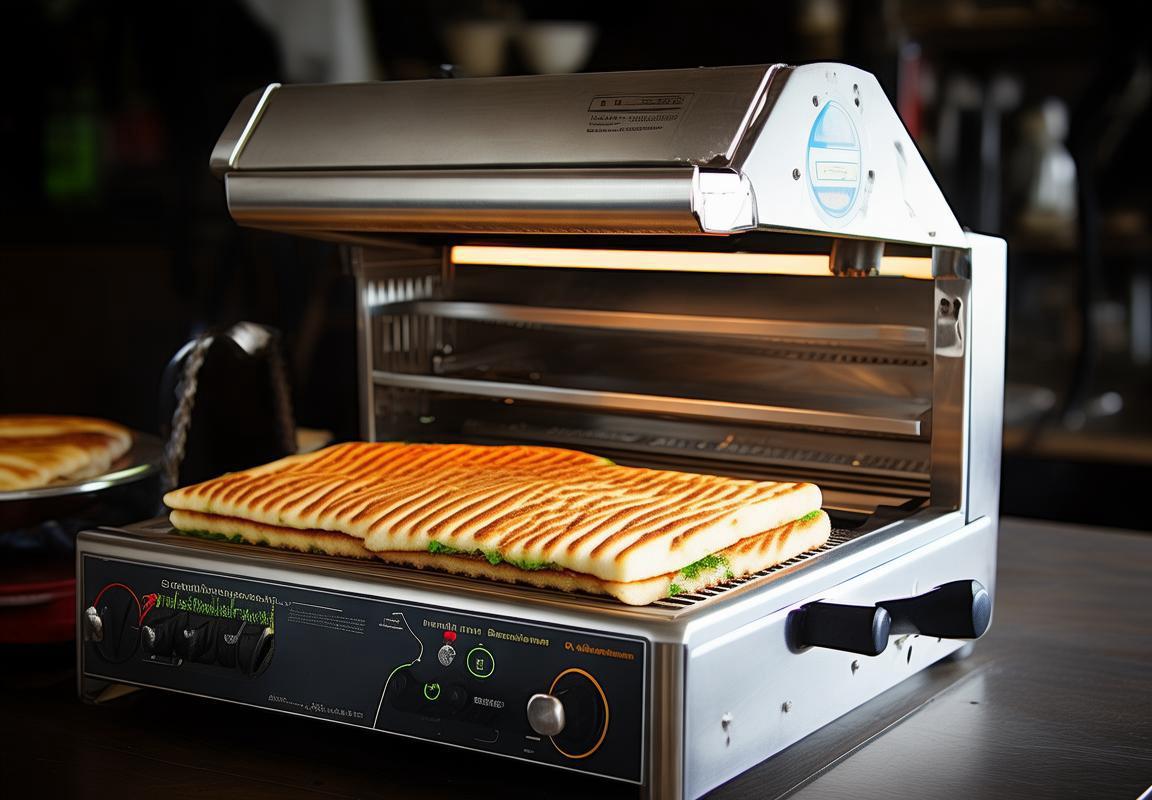
The Impact of Technology on Commercial Panini Press Design
In the ever-evolving world of commercial kitchen equipment, the design of panini presses has undergone a remarkable transformation, largely driven by technological advancements. These innovations have not only enhanced the functionality of these appliances but also set the stage for a new era of efficiency and convenience in the fast-paced culinary industry.
-
Precision Cooking TechnologyModern commercial panini presses often feature advanced cooking technology that ensures consistent results every time. From even heat distribution to precise temperature control, these features are crucial for maintaining the integrity of ingredients and achieving that perfect golden-brown crust. Smart sensors and programmable settings allow operators to tailor the cooking process to specific menu items, from classic sandwiches to gourmet wraps.
-
Enhanced Safety FeaturesSafety is a top priority in commercial kitchens, and technology has played a significant role in improving the design of panini presses. Modern models come with features like automatic shut-off systems, which activate when the press is left unattended, reducing the risk of burns and accidents. Additionally, some presses are designed with non-slip surfaces and cool-to-the-touch handles, ensuring that operators can work safely without fear of injury.
-
Improved Heat RetentionEfficient heat retention is essential for maintaining the temperature of the cooking surface and ensuring that the panini is cooked evenly. Many modern commercial panini presses incorporate advanced materials and insulation techniques to retain heat more effectively. This not only reduces energy consumption but also allows for quicker cooking times, which is particularly beneficial in busy kitchen environments.
-
User-Friendly ControlsThe design of panini presses has become increasingly user-friendly, thanks to intuitive controls and interfaces. Digital displays and simple-to-use dials make it easy for operators to adjust settings without the need for extensive training. Some models even offer touch screen interfaces, allowing for quick adjustments and easy programming of cooking profiles for a variety of sandwich options.
-
Customizable Cooking PlatesIn the quest for versatility, many commercial panini press manufacturers have introduced models with customizable cooking plates. These plates can be swapped out to accommodate different types of bread and ingredients, from thick ciabatta to delicate tortillas. This feature allows for a wider menu selection and the ability to cater to diverse dietary preferences and restrictions.
-
Energy EfficiencyAs sustainability becomes a key concern for businesses, energy-efficient designs are becoming more prevalent in commercial panini presses. These appliances are engineered to use less energy while still delivering high-performance cooking results. Features like energy-saving modes and efficient heating elements contribute to reduced operational costs and a smaller carbon footprint.
-
Enhanced CleanlinessThe design of commercial panini presses has also evolved to make cleaning easier and more efficient. Many models now feature removable and dishwasher-safe parts, reducing the time and effort required to maintain the appliance. Some presses even come with self-cleaning functions that help to eliminate food residue and maintain the cooking surface in optimal condition.
-
Integration with Kitchen SystemsTechnology has also allowed for the integration of panini presses with other kitchen systems, such as conveyor ovens and sandwich assembly lines. This integration streamlines the production process, increases throughput, and reduces the potential for human error. Operators can now manage multiple cooking stations with greater ease, leading to improved overall kitchen efficiency.
-
Smart ConnectivityThe latest trend in commercial panini press design is the incorporation of smart connectivity. Some models can be connected to kitchen management systems or even mobile devices, allowing operators to monitor and control cooking parameters remotely. This level of connectivity not only adds convenience but also provides valuable data for inventory management and menu optimization.
-
Durability and ReliabilityFinally, the technological advancements in panini press design have led to increased durability and reliability. High-quality materials and robust construction ensure that these appliances can withstand the rigors of a busy kitchen environment. This longevity not only extends the life of the equipment but also reduces the need for frequent repairs and replacements.
In conclusion, the impact of technology on commercial panini press design is undeniable. From enhanced safety and user-friendliness to increased efficiency and sustainability, these advancements have significantly shaped the modern commercial kitchen landscape, offering operators a wide range of benefits that ultimately contribute to their success.
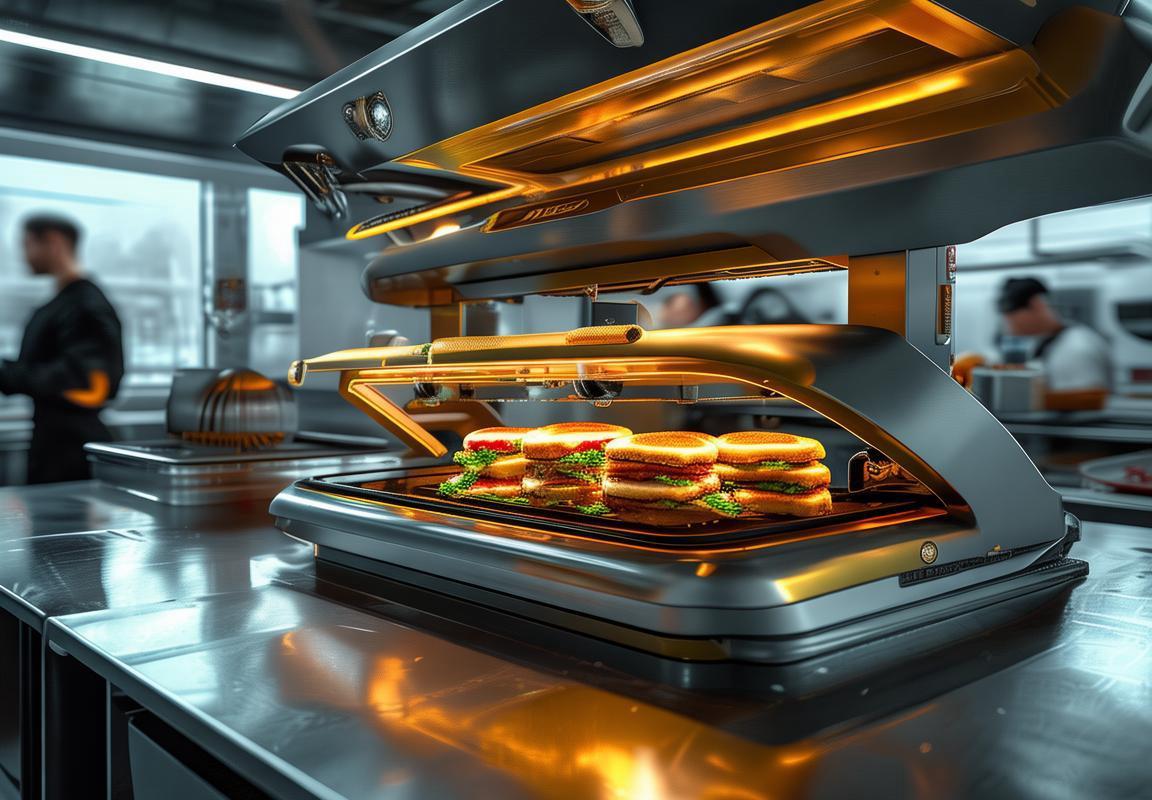
Market Trends: What’s Hot in the Commercial Panini Press Industry?
The commercial panini press industry is constantly evolving, with new trends shaping the market landscape. Here’s a delve into what’s currently hot in this dynamic sector:
Gone are the days when a simple panini press was enough for a café or restaurant. Today, customers demand more from their food, and this has led to a surge in sophisticated designs and features. One trend that’s gaining traction is the integration of smart technology, which not only enhances user experience but also improves efficiency.
Customization is another key trend. As consumers become more health-conscious, there’s a growing demand for customizable options that allow for a variety of fillings, from lean proteins to gluten-free alternatives. This has spurred manufacturers to create presses that can handle a wider range of ingredients, ensuring that every customer can find something to suit their dietary preferences.
Energy efficiency is no longer a nice-to-have but a must-have feature. With rising energy costs and an increasing focus on sustainability, commercial panini presses that consume less power are becoming more popular. These eco-friendly models not only save on operational costs but also appeal to businesses looking to reduce their carbon footprint.
The compact design of panini presses has also become a significant trend. In today’s fast-paced environment, operators are looking for appliances that take up less space without compromising on performance. Portable and space-saving presses are not only practical for busy kitchens but also allow for more flexibility in kitchen layouts.
Safety features have never been more crucial. From anti-scalding elements to automatic shut-off functions, manufacturers are focusing on ensuring that their presses are as safe to use as they are efficient. This focus on safety is not only a regulatory necessity but also a testament to the industry’s commitment to customer satisfaction.
In the world of commercial panini presses, versatility is king. Many operators are seeking presses that can do more than just make paninis. From grilling sandwiches to searing steaks, the latest models are designed to be multi-functional, offering a range of cooking options that cater to a diverse menu.
Another hot trend is the emphasis on durability. With the expectation that equipment will last for years, commercial panini presses are being built to withstand heavy use. This means robust construction, high-quality materials, and long-lasting components that can stand up to the rigors of a busy kitchen environment.
The rise of mobile catering and food trucks has also influenced the design of commercial panini presses. These portable appliances are designed to be easily transported and used on the go, providing a convenient solution for food service providers who need to adapt to different locations and events.
In the realm of materials, there’s a shift towards non-stick coatings that are not only easy to clean but also resistant to wear and tear. This trend is particularly appealing to operators who want to reduce maintenance time and costs.
Lastly, the integration of connectivity features is on the rise. Many commercial panini presses now come with built-in interfaces that allow operators to monitor performance, track usage, and even receive maintenance reminders. This level of connectivity is not just a convenience but also a way for businesses to optimize their operations and increase profitability.
In summary, the commercial panini press industry is responding to the needs of modern kitchens with a focus on technology, customization, energy efficiency, compact design, safety, versatility, durability, portability, non-stick materials, and connectivity. These trends reflect a market that is both customer-centric and forward-thinking, constantly adapting to meet the evolving demands of the food service industry.
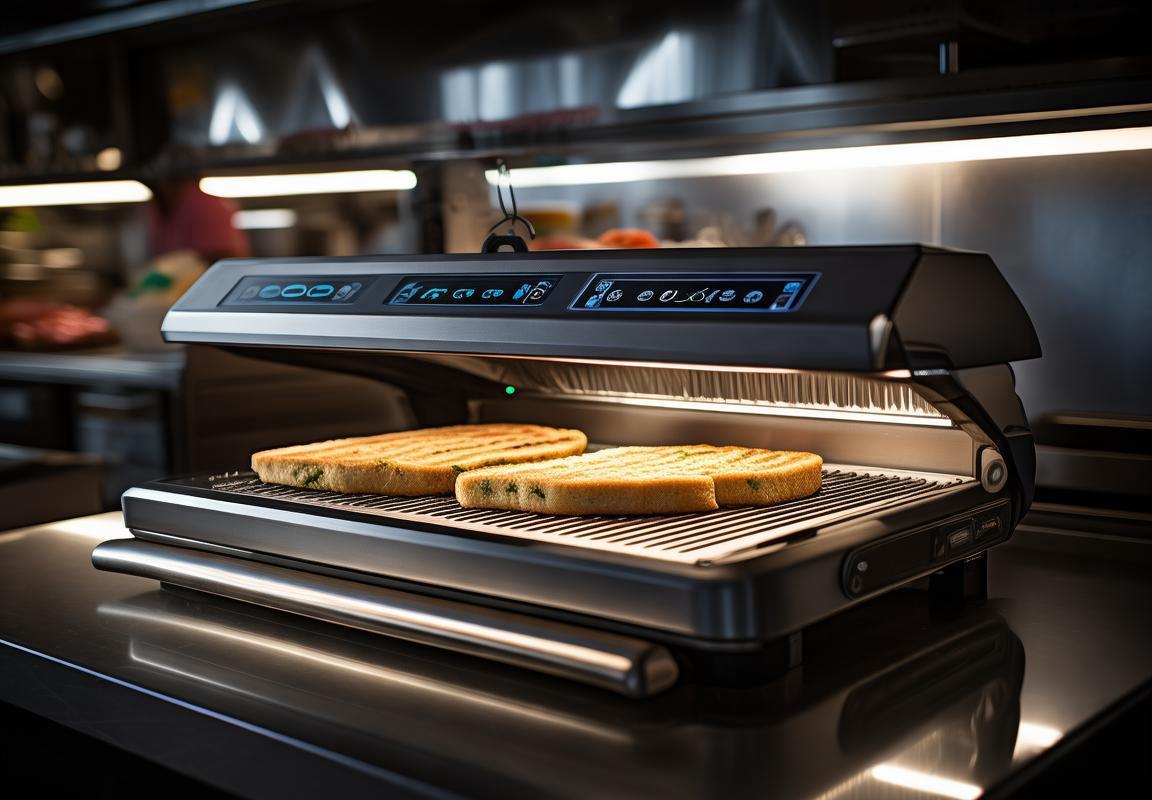
Consumer Preferences and How They Shape the Market
In the ever-evolving landscape of consumer preferences, the commercial panini press industry has seen a remarkable transformation. From the way we dine out to the expectations we have for our culinary experiences, consumer tastes play a pivotal role in shaping the market. Here’s a delve into how these preferences are influencing the industry:
The quest for convenience is a driving force in the commercial panini press market. With busy lifestyles and the rise of on-the-go eating, consumers are increasingly seeking quick and easy meal options. This has led to a surge in demand for panini presses that can quickly cook a variety of food items, from sandwiches to wraps and flatbreads. The ability to customize these items to suit individual tastes has also become a key feature, with adjustable temperature controls and various heating elements becoming standard.
Health consciousness is another significant trend that’s reshaping the market. As consumers become more aware of their dietary choices, they’re looking for healthier alternatives to traditional fast food. Commercial panini presses have responded by offering models that can cook food with minimal oil or fat, appealing to those looking to reduce their intake of unhealthy ingredients. The ability to prepare fresh, homemade meals in a matter of minutes has made these presses a favorite among health-conscious consumers.
Customization extends beyond just the food being cooked; it also encompasses the design and functionality of the panini presses themselves. Consumers are drawn to models with sleek, modern designs that fit into their kitchen aesthetics, whether it’s a commercial setting or a home environment. The integration of smart technology, such as touchscreens and programmable settings, has become a must-have for many, as it allows for ease of use and the ability to replicate favorite recipes with precision.
Sustainability is a growing concern among consumers, and this is influencing the commercial panini press market as well. Manufacturers are responding by producing presses made from eco-friendly materials and promoting energy-efficient designs. The market has seen an increase in the use of recycled materials and the development of presses that consume less energy, aligning with the values of environmentally conscious consumers.
Portability is also a key factor in consumer preferences. The demand for compact, lightweight panini presses that can be easily transported and used at events or in smaller venues has surged. These portable presses are perfect for food trucks, outdoor markets, and even for businesses that want to offer a mobile catering service. The convenience and versatility of these units make them a popular choice for businesses looking to expand their service offerings.
Safety is a non-negotiable in the commercial kitchen, and consumer preferences are pushing manufacturers to prioritize this aspect. Features like non-slip surfaces, safety locks, and clear visibility of the cooking area are becoming standard in new models. Additionally, the inclusion of child safety locks and temperature control systems that prevent accidental burns are becoming more prevalent, addressing the concerns of both operators and customers.
The demand for variety in the types of food that can be cooked has also influenced the market. Consumers are looking for panini presses that can handle a range of ingredients, from delicate sandwiches to hearty paninis with multiple fillings. This has led to the development of presses with adjustable pressure and heating elements that can cater to a wide array of recipes.
The rise of food allergies and dietary restrictions has also shaped the market. Manufacturers are now offering panini presses that can cook items separately to avoid cross-contamination, which is particularly important for those with severe allergies. This attention to detail has not only made the market more inclusive but has also opened up new opportunities for niche markets, such as gluten-free and vegan-friendly options.
In the realm of consumer preferences, the commercial panini press industry is witnessing a shift towards innovation and adaptability. From the emphasis on health and sustainability to the need for convenience and safety, these trends are driving the market forward. As manufacturers continue to innovate and cater to these evolving preferences, the commercial panini press industry is poised for continued growth and success.
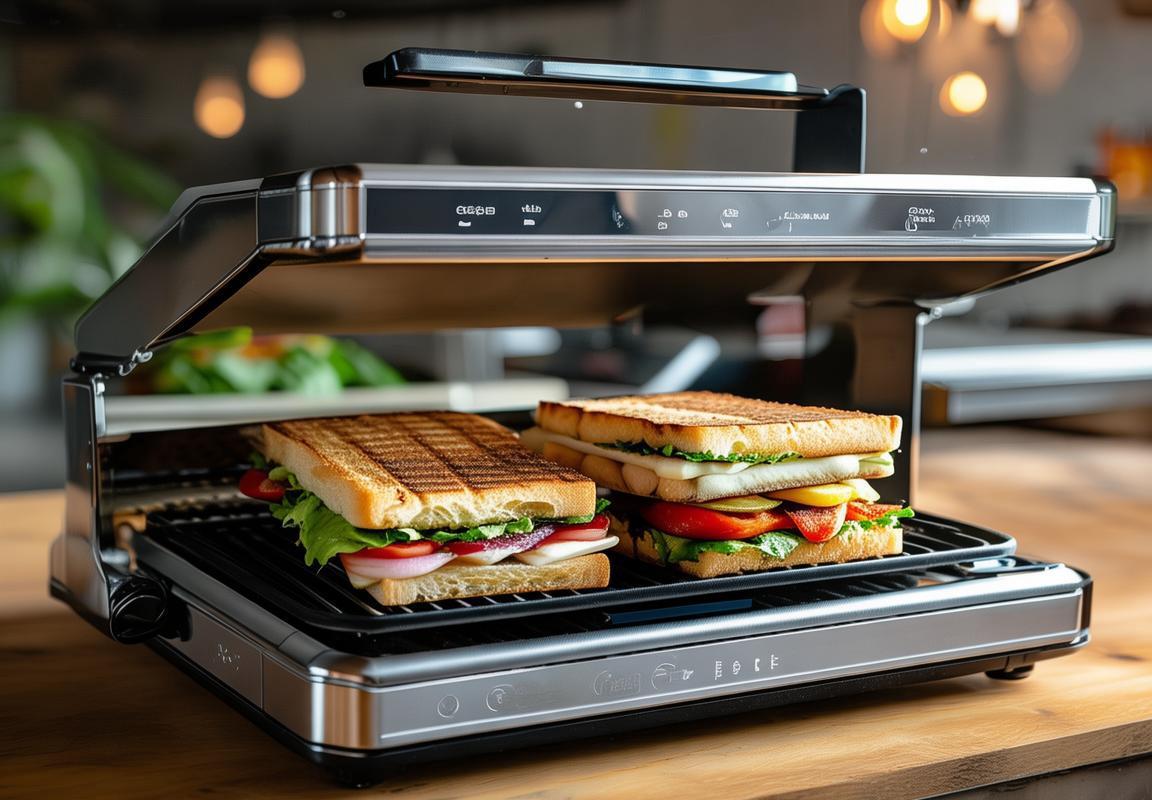
The Role of Innovation in Driving Sales for Commercial Panini Press Manufacturers
In the competitive landscape of commercial panini press manufacturing, innovation serves as a pivotal force in driving sales. From user-friendly designs to eco-friendly features, here’s how creativity is propelling this sector forward.
Customers are no longer satisfied with standard offerings; they seek solutions that not only enhance their productivity but also reflect their values. Manufacturers have recognized this shift and are investing heavily in R&D to create cutting-edge panini presses.
The integration of smart technology is one such innovation that’s catching the attention of both businesses and consumers. With features like touch-screen controls and programmable settings, operators can easily tailor the cooking process to their specific needs. This not only simplifies the operation but also ensures consistent quality in every press.
Eco-conscious consumers are driving a wave of demand for energy-efficient appliances. Commercial panini press manufacturers are responding by incorporating energy-saving technologies into their designs. From improved heating elements to efficient insulation, these presses are not just good for the wallet but also for the environment.
Customization is another area where innovation is making waves. Many manufacturers now offer a range of options, from various press sizes to interchangeable plates, allowing businesses to cater to diverse menu items and customer preferences. This adaptability means that restaurants and cafes can invest in a press that truly fits their operational requirements.
Durability is a key factor in the commercial kitchen environment, and innovative materials and construction methods are making these presses more resilient than ever. High-quality stainless steel, reinforced hinges, and heat-resistant coatings are just a few examples of how manufacturers are ensuring their products withstand the rigors of a busy kitchen.
Safety is paramount in commercial kitchens, and manufacturers are continually finding ways to make their panini presses safer. Features like non-slip bases, child-proof locks, and automatic shut-offs in case of overheating are becoming standard, reducing the risk of accidents and protecting staff and patrons.
The rise of health-conscious consumers has also influenced the design of commercial panini presses. Many models now come with features that allow for healthier cooking options, such as adjustable temperature controls that prevent overcooking and burning. These presses can cook paninis with minimal oil, making them a healthier choice for diners.
Another significant trend is the integration of social media and marketing into the design of commercial panini presses. Manufacturers are creating models that are not just functional but also visually appealing, making them perfect for Instagram and other social media platforms. The “foodie” culture is all about visual appeal, and these presses are designed to become a talking point in any kitchen.
In the realm of customer service, innovation is also at play. Some manufacturers are offering comprehensive support packages, including extended warranties and quick turnaround for repairs or maintenance. This commitment to customer satisfaction is a testament to how far innovation has brought the commercial panini press industry.
As the market evolves, manufacturers are also looking towards the future. They’re exploring the potential of emerging technologies, such as AI and IoT, to create panini presses that can learn from usage patterns and adjust settings for optimal performance. This kind of proactive technology not only saves time but also reduces the likelihood of user error.
The role of innovation in driving sales for commercial panini press manufacturers is undeniable. By staying ahead of consumer preferences and market trends, these manufacturers are not just selling a product; they’re selling a solution that enhances the overall kitchen experience. From the smallest details to the largest technological advancements, innovation is the cornerstone of success in this dynamic industry.
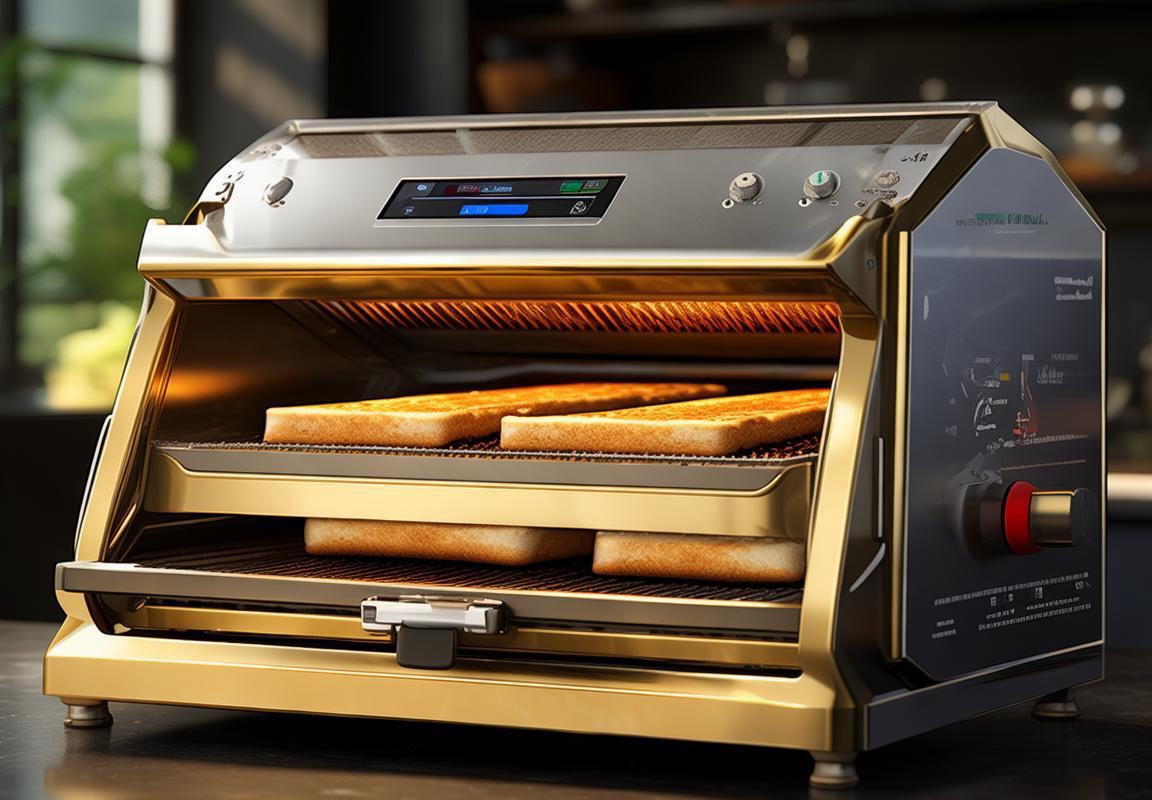
Case Studies: Success Stories from Leading Commercial Panini Press Manufacturers
In the competitive landscape of commercial panini press manufacturing, several companies have carved out a niche for themselves with innovative designs and strategic market approaches. Let’s delve into the success stories of a few such leaders in the industry.
One standout success story is that of EuroCuisine, a brand known for its high-quality commercial panini presses. Their rise to the top can be attributed to a combination of factors. For starters, they invested heavily in research and development, ensuring that their products were not just durable but also user-friendly. This attention to detail led to features like adjustable pressure settings and non-stick surfaces that appealed to busy kitchen staff.
Another remarkable story comes from GourmetChef, a company that took a bold step by integrating smart technology into their panini presses. They introduced models with built-in timers, temperature controls, and even Bluetooth connectivity, allowing operators to manage multiple units from a distance. This leap in technology not only increased efficiency but also enhanced the overall customer experience, making GourmetChef a go-to brand for upscale dining establishments.
In the realm of eco-conscious consumers, GreenGrill Panini Presses has become a beacon of sustainability. They specialize in energy-efficient models that not only reduce operational costs but also minimize the environmental footprint. By tapping into the growing market of eco-friendly products, GreenGrill has secured a loyal customer base among health-conscious diners and businesses aiming to reduce their carbon footprint.
One of the most intriguing success stories is from a relative newcomer to the commercial panini press market, HeatWave Innovations. They turned the industry on its head by focusing on the unique needs of food trucks and pop-up restaurants. Their compact, portable panini presses were a game-changer for these mobile operators, who often struggle with space constraints. The lightweight and easy-to-use design of HeatWave’s products quickly gained traction, making the brand a favorite among the mobile foodservice sector.
The success of these companies also hinges on their marketing strategies. For instance, SunBake Panini Presses has leveraged social media to create a strong brand presence. They regularly share behind-the-scenes content, showcasing their commitment to quality and their passion for the product. This approach has helped them build a community of loyal followers who are eager to try their products.
Innovation isn’t just about new products; it’s also about finding creative solutions to existing problems. Take, for example, the story of QuickPress Systems. They faced a challenge with their existing models, which were prone to overheating. Instead of ignoring the issue, they took it head-on by developing a thermal management system that prevented overheating while maintaining consistent pressure. This proactive approach not only resolved a common problem but also set their brand apart from competitors.
One of the most compelling success stories comes from the Italian brand, BellaForno. Their journey to the top started with a focus on authenticity. They sourced high-quality materials and designed their panini presses to mimic the classic Italian style, appealing to consumers who appreciate the art of traditional cooking. Their commitment to craftsmanship and quality has earned them a reputation as a premium brand, sought after by both restaurateurs and food enthusiasts.
The success stories of these leading commercial panini press manufacturers are a testament to the power of innovation, customer-centric design, and strategic marketing. By understanding the needs of their target market and continuously pushing the boundaries of what’s possible, these companies have not only driven sales but have also shaped the market in ways that benefit both businesses and consumers alike. Whether it’s through technological advancements, sustainable practices, or a focus on traditional values, these brands have shown that success in the commercial panini press industry is about more than just making a great product—it’s about creating a narrative that resonates with the market.
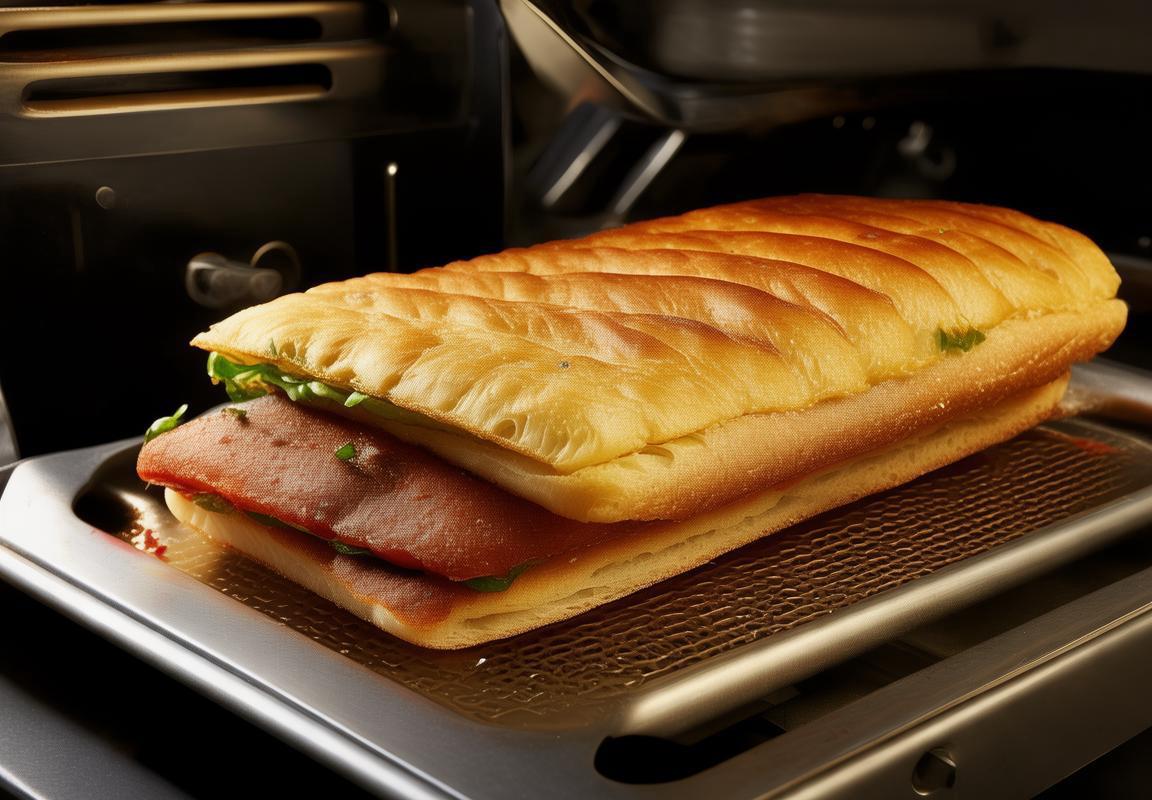
Challenges and Opportunities: Navigating the Competitive Landscape
In the competitive landscape of commercial panini press manufacturing, challenges and opportunities coexist, requiring manufacturers to stay agile and innovative. Here’s a glimpse into the intricacies of this dynamic market.
The evolution of consumer tastes has led to a demand for more versatile and efficient machines. This shift has not only pushed manufacturers to develop multifunctional panini presses but also to ensure they meet the stringent hygiene standards required in commercial kitchens.
Manufacturers must grapple with the challenge of keeping up with rapid technological advancements. Innovations like digital temperature control and programmable settings have become standard features, but integrating these technologies into existing products can be complex and costly.
One of the biggest opportunities lies in sustainability. As more businesses adopt eco-friendly practices, there’s a growing market for energy-efficient panini presses. Manufacturers that can offer eco-friendly options without compromising on quality are poised to gain a competitive edge.
The market is also witnessing a surge in demand for compact and portable panini presses. This trend is particularly evident in food trucks, outdoor events, and smaller restaurants where space is at a premium. Adapting to this demand has become a strategic move for many manufacturers.
The rise of health consciousness among consumers has prompted the creation of panini presses that cater to specific dietary needs, such as those that can handle gluten-free breads or those designed for vegan and vegetarian options. Navigating these specialized markets requires a deep understanding of consumer preferences and the ability to innovate accordingly.
Compliance with international safety standards is another challenge. Panini presses must meet various certifications, which can vary from region to region. Keeping track of these regulations and ensuring that products are compliant is a task that demands careful attention.
On the flip side, the globalization of the foodservice industry has opened up new markets for commercial panini press manufacturers. As international cuisine becomes more accessible, there’s a greater need for presses that can handle a variety of bread types and textures, from thick ciabatta to delicate tortillas.
Supply chain disruptions have become a significant challenge in recent years. Pandemics, trade disputes, and geopolitical tensions have impacted the availability of raw materials and the cost of manufacturing. Manufacturers that can maintain a resilient supply chain are better equipped to handle such uncertainties.
The opportunity in this challenge is to diversify the supply base. By sourcing materials from multiple suppliers and regions, manufacturers can reduce their dependency on a single source and mitigate the risk of supply chain interruptions.
Lastly, the integration of smart technology in panini presses presents both a challenge and an opportunity. While it offers enhanced functionality and convenience, it also requires manufacturers to invest in research and development to keep up with the rapidly evolving technology landscape.
In conclusion, the competitive landscape of commercial panini press manufacturing is shaped by a myriad of factors. By embracing innovation, adapting to consumer preferences, and navigating the complexities of global markets, manufacturers can turn challenges into opportunities for growth and success.
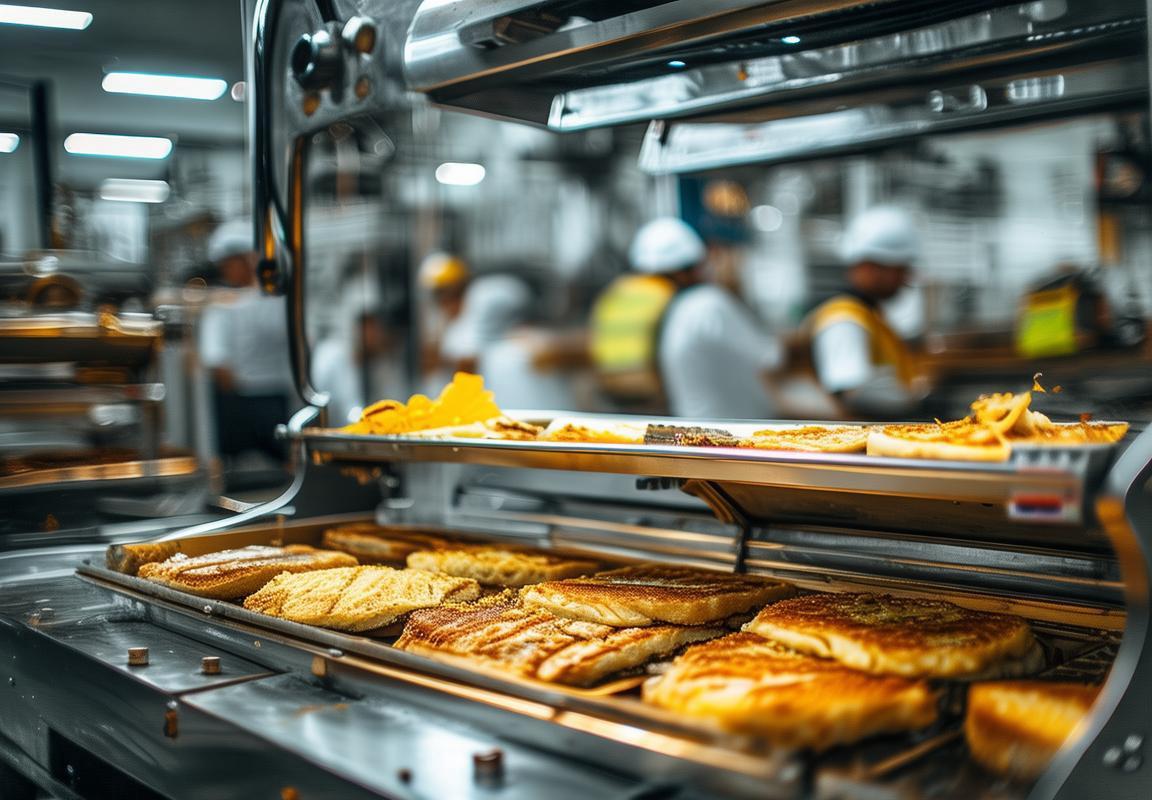
Conclusion: The Future of Commercial Panini Press Manufacturing
The evolution of commercial panini press manufacturing has been marked by a series of challenges and opportunities that have shaped the competitive landscape. From technological advancements to changing consumer preferences, the industry has navigated through various hurdles while embracing new possibilities. Here’s a look at some of the key aspects that have influenced the direction of commercial panini press manufacturing.
Innovation has been a driving force behind the success of commercial panini press manufacturers. The integration of smart features, such as programmable settings and self-cleaning functions, has not only improved the user experience but also enhanced efficiency in commercial kitchens. As a result, customers are increasingly seeking out these innovative features when making their purchasing decisions.
The competitive landscape has also been shaped by the rise of eco-friendly and sustainable practices. Manufacturers that prioritize energy efficiency and use recyclable materials are gaining a competitive edge. These eco-conscious consumers are not just looking for products that perform well; they’re also seeking those that align with their values regarding environmental responsibility.
Another notable trend is the customization of panini presses to cater to specific market needs. For instance, the foodservice industry has varying requirements based on the type of establishment—whether it’s a café, restaurant, or fast-food chain. By offering a range of models with different capacities, cooking temperatures, and functionalities, manufacturers are better equipped to meet these diverse demands.
The globalization of the market has introduced new challenges and opportunities. As commercial panini presses gain popularity worldwide, manufacturers must adapt to local regulations and standards. This has led to an increase in partnerships with local suppliers and distributors, which not only helps in compliance but also allows for a deeper understanding of international markets.
In terms of consumer preferences, the emphasis on health and wellness has been a game-changer. The demand for healthier eating options has spurred the creation of panini presses that can cook with minimal oil, offering a healthier alternative to traditional cooking methods. This shift in consumer behavior has prompted manufacturers to focus on creating products that cater to these new dietary trends.
Furthermore, the integration of social media and online reviews has significantly impacted the competitive landscape. Manufacturers are now more than ever aware of the power of brand reputation and customer feedback. A strong online presence and positive reviews can boost sales, while negative feedback can have the opposite effect. As such, customer satisfaction and service quality have become crucial components of a successful marketing strategy.
The rise of mobile food trucks and pop-up restaurants has also presented a unique opportunity for commercial panini press manufacturers. These portable and versatile machines are ideal for businesses that operate on the go. This niche market has led to the development of compact and durable panini presses that can withstand the rigors of a mobile environment.
Despite these opportunities, the industry faces challenges such as rapid technological advancements and fluctuating raw material prices. To stay ahead, manufacturers must be agile and adapt quickly to new technologies, such as the Internet of Things (IoT), which could revolutionize the way commercial panini presses are used and maintained.
In conclusion, the future of commercial panini press manufacturing hinges on a delicate balance between innovation, consumer preferences, and market trends. Manufacturers that can navigate these complex dynamics while maintaining a focus on quality and customer satisfaction will likely thrive in this competitive landscape. The key to success lies in understanding the needs of the market and continuously evolving to meet those needs with innovative solutions.